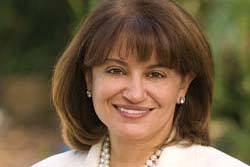 Practical Practitioner
Practical Practitioner
By: Pamela Egan, FNP-C CDE
RSV: Respiratory Syncytial Virus
When you hear about RSV or Respiratory Syncytial Virus infections, most parents envision a child with non-stop cough, who is also wheezing and having difficulty breathing.
While RSV can cause such serious symptoms, it is important to remember that many children infected with RSV just get a simple cold or mild symptoms. So while most children become infected with RSV by age 2 years, fortunately most of them do not have serious infections.
Children usually develop symptoms of RSV about three to five days after being exposed to someone else who is sick with RSV, either by direct contact with their respiratory secretions or indirect contact with contaminated toys and other objects.
The symptoms of RSV infections can range from having a simple clear runny nose and occasional cough that can be treated at home, to severe difficulty breathing that may require hospitalization. Other symptoms might include a low-grade fever, sore throat, headache, and irritability. Younger children, especially those under 2 or 3 years old, are most at risk for more severe symptoms, such as high fever, wheezing, difficulty breathing, a persistent cough or apnea.
Although testing of nasal secretions can detect the RSV virus, the diagnosis is usually made by the pattern of a child’s symptoms (a clinical diagnosis), especially if they have a cold and are wheezing. Testing is sometimes helpful when a child is hospitalized for infection control and quarantine purposes.
The treatment of RSV infections is controversial. Some clinicians aggressively treat the wheezing with nebulizer treatments and steroids, like they would for a child with asthma, while many others feel that they have no affect. Others try breathing treatments and just continue them if a child has a good response.
Children with trouble breathing may need to be hospitalized to get intravenous fluids, oxygen and sometimes respiratory support on a ventilator
An antiviral drug, Ribavirin, is available, but is typically only used for serious, life-threatening RSV infections, and even then its use is controversial.
For children with mild symptoms, a cough and cold medicine, Tylenol or Motrin and a cool mist humidifier may help you child feel better until he gets better on his own.
RSV season usually runs from November or December through March. Synagis is a monthly shot that can be given to high risk children, especially premature infants, to prevent them from getting RSV.
While older children and adults with RSV typically get a simple cold, younger children can get bronchiolitis, with wheezing and trouble breathing.
RSV infections can linger for one to three weeks. Antibiotics do not help treat RSV, but may be needed if a child gets a secondary bacterial infection, like an ear infection. Like other viruses that can cause a cold, it is possible to get RSV more than once. There are other viruses beside RSV that can cause bronchiolitis, including the flu and parainfluenza virus infections. If your child is diagnosed with recurrent RSV or bronchiolitis they may actually have asthma.
Frequent handwashing and not sharing toys may help prevent the spread of RSV in a home or daycare. Infants with RSV or bronchiolitis may be at increased risk for asthma and other respiratory problems later in life.
This article was originally published February 4, 2005 in The St. Tammany News.
PamelaEgan.com > Health Articles > Pediatric

